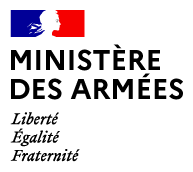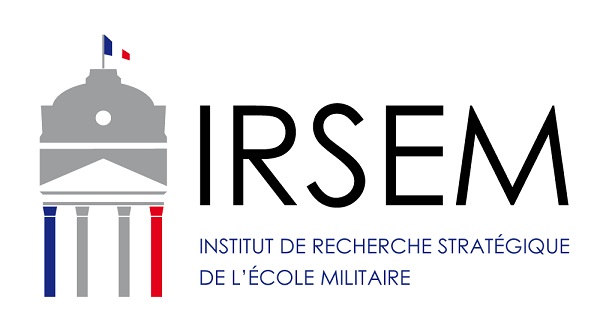Download Strategic Brief no. 63 - 2023
Strengthening military cooperation between Singapore and China
What is at stake for the city-state?
Carine Pina
In recent years, China and Singapore have been developing their military cooperation. China is conducting a very active defence diplomacy in Singapore, in response to that led by the United States in the region. For the city-state, it is a question of maintaining balanced relations with both powers, a position that seems to be slightly more delicate at present.
Between April 28 and May 1st 2023, China and Singapore jointly carried out a series of maritime military drills involving four ships. The People’s Liberation Army (PLA) participated with the frigate Yulin (Type 054A/NATO Jiangkai II) and the minesweeper Chibi (Type 08/NATO Wosao I). The Formidable-class stealth frigate (RSS Intrepid (69)) and the Bedok-class mine countermeasures vessel Punggol represented the Republic of Singapore. The shore phase of these exercises included joint planning and professional exchanges, leading to a shared understanding of how the joint drills would be carried out. During the sea phase, the naval troops executed a range of serials, including landing and take-off of PLA(N) helicopters on RSS Intrepid, gunnery firing, replenishment-at-sea approaches, search and rescue, as well as communication and manoeuvring exercises. Then, the Chinese ships took part in the IMDEX international exhibition.
This was the second bilateral flag drill planned in the Sino-Singapore military cooperation: the first of its kind took place in 2015 and could not be repeated due to the COVID pandemic. The two defence ministers decided the resumption of these manoeuvres in November 2022 in Xi’an (China). However, in 2021, bilateral passage exercises (PASSEXes), which did not involve direct contact, were held twice in the international waters of the China South Sea.
In June 2023, China’s state Councillor and Minister of Defence, General Li Shangfu arrived in Singapore for the second inter-ministerial dialogue with his counterpart, Dr. Ng Eng Hen, as well as to participate in the Shangri-La Dialogue. They discussed regional security issues, and practical ways to strengthen ASEAN-China defence cooperation. Both Ministers also witnessed the signing of a Memorandum of Understanding (MOU) on the Establishment of a Secure Defence Telephone Link, between Permanent Secretary (Defence) Chan Heng Kee and China People's Liberation Army Deputy Chief of Joint Staff Central Military Commission Lieutenant-General Jing Jianfeng. This hotline, together with the signature in June 2022 of agreements on deeper cooperation in military education and academic exchanges, made it possible to give concrete form to all the elements of bilateral cooperation planned in the amendment to the Agreement on Defence Exchanges and Security Cooperation (ADESC), signed on October 19th, 2019. This text represented a milestone in defence cooperation between the two states, which began with the Defence Cooperation Agreement in 2008. Indeed, the 2019 enhanced ADESC includes new features such as a mutual logistics support arrangement; a bilateral hotline; a regular dialogue between defence ministers; development of existing army and navy exercises and the reinforcement of academic exchanges.
Chinese defence diplomacy in Singapore once again illustrates Beijing's willingness to foster its own portfolio of defence partnerships in Southeast Asia and the Asia-Pacific region to reshape the security architecture, if not to its advantage, then at least so that it is not unfavorable. Chinese defence diplomacy is developing alongside that of the Americans in the region and is clearly part of the growing competition between the two powers. For example, the April-May 2023 joint drills between Beijing and Singapore took place just after the ones between the Philippines and the United States, during which the latter deployed 17,000 personnel. In January 2023, Singapore participated in joint manoeuvres with the United States, and in August 2022 in the Super Garuda ones involving 12 nations.
The US State Department is presenting Singapore as one of its strongest partners in Southeast Asia. A notable milestone in their military cooperation was, in 2019, the signing of the agreement renewing the 1990 Memorandum of Understanding on U.S. access to Singapore's infrastructure and the MoU on the training of the Republic of Singapore Air Force at Andersen Air Force Base in the United States. The US Indo-Pacific Command also increased its personnel in Singapore by 12% between 2018 and 2019, and the city-state is by far the largest purchaser of US military equipment in Southeast Asia. Between 2019 and 2021, the United States authorized the permanent export of over $26.3 billion in defence articles to Singapore. Finally, more than 1,000 Singaporean military personnel participated in training exercises and Professional Military Education in the United States.
Singapore, for its part, follows an unchanging policy: it cooperates militarily with all states. It cooperates and conducts drills with India, Australia, Great Britain, Japan and others. As far as China and the United States are concerned, Singapore's leaders insist that they do not want to choose between them, and that a confrontation between Beijing and Washington would be catastrophic for the region. Indeed, since Singapore resumed diplomatic relations with China in 1991, the city-state has been careful to maintain a balance between the two major powers in all areas: economic, political and military. As a small state (728.6 km2) with a population predominantly of Chinese origin, Singapore has been striving since independence to build its own nation based on Chinese characteristics, which are different from that of the mainland, and to reject all elements that might lead its immediate neighbours (Malaysia and Indonesia) to regard it as an outpost of China.
Having become one of the most developed economies in the region, with dazzling growth and a GDP per capita approaching €66,069 (2022), Singapore wants to retain its position as a technological and financial hub, open to highly qualified immigration and foreign investment, including from the United States and China. However, this position as a gateway seems to be increasingly difficult to maintain in the context of growing competition between Beijing and Washington. As researcher Ja Ian Chong points out: for this to be viable, two conditions must be met. The first is not favouring one over the other, which is what Singapore is doing. The second is the existence of shared interests (economic, political) between the United States and China, so that Singapore avoid going against either country and risk counter-measures when cooperating with either one. The latter condition now seems to be undermined. Singapore's military equipment is largely American-made, so sharing too much with the PLA during joint drills could “potentially” pose problems. Such a situation could prompt Singapore to find a “third way” by strengthening its partnerships, including military ones, with other countries (ASEAN, Europe). One example is the memorandum of understanding signed in March 2023 between Singapore's Defence Science and Technology Agency and the Swedish company SAAB for the development and design of six multi-purpose warships to replace six Victory-class corvettes. European companies MDBA, Thales and Leonardo have also been named as part of the project. The contract is worth an estimated US$1.2 billion.
The partnership between Singapore and European defence companies is not new, but today it seems all the more welcome for Singapore as it makes it possible to pursue a policy of avoiding choosing between Washington and Beijing. However, the city-state has not yet resolved all areas of disagreement likely to destabilise this position. For example, the increasing arrival and settlement of highly qualified Chinese citizens, or wealthy investors and their families, has given rise to speculation about greater Chinese influence in Singapore.
Carine Pina, PhD, is researcher China at IRSEM
Contact : carine.pina@irsem.fr



